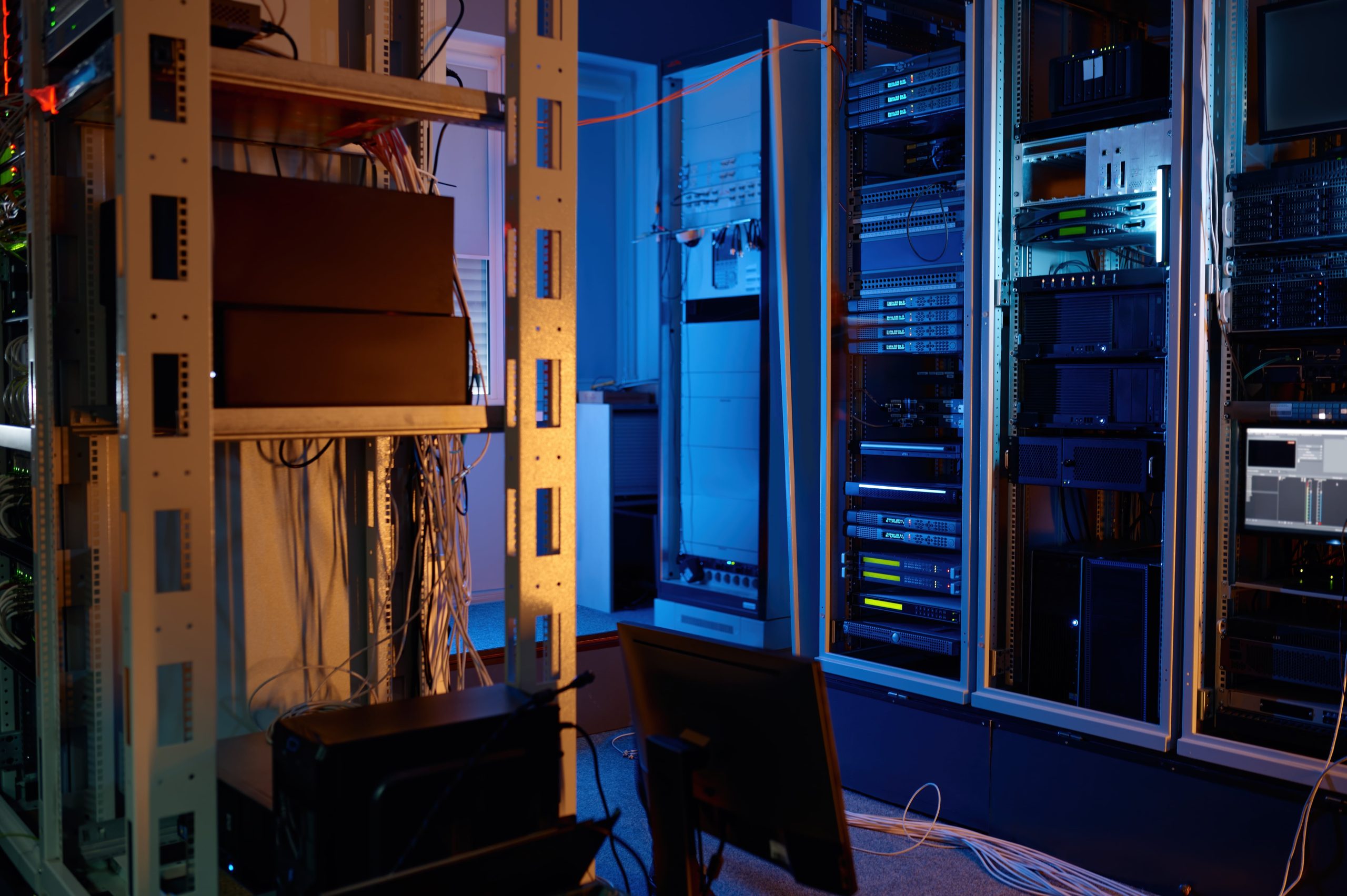Your company’s data is its most valuable asset. The server room is the heart of your IT infrastructure, housing the critical systems that keep your operations running smoothly. A well-planned server room design in Houston is not just an IT luxury; it is a fundamental business requirement. Without a proper environment, you risk equipment failure, data loss, and costly downtime that can cripple your business.
This guide will walk you through the essential components of creating a secure, efficient, and scalable server room. We will cover everything from physical layout and cooling to power management and security. Following these best practices will help protect your investment and ensure your business remains resilient in the face of unexpected challenges.
Planning Your Server Room: Location and Layout
The first step is choosing the right location. Your server room should be in a secure, low-traffic area of your building, away from exterior walls and windows to minimize risks from weather and physical security breaches. Avoid placing it in basements prone to flooding or on top floors where leaks could be a problem.
Size and Scalability
Consider your current needs and future growth. A cramped server room is difficult to work in and limits your ability to expand. A general rule is to plan for at least 5 to 10 years of growth. The layout should allow for easy access to the front and back of server racks for maintenance. Ensure you have enough space for “hot aisles” and “cold aisles,” a key strategy for efficient cooling. Cold aisles are where you feed cool air to the front of your server racks, while hot aisles expel the hot air from the back.
Physical Security
Physical security is paramount. Access should be strictly controlled with measures like key card entry, biometric scanners, or keypad locks. Only authorized personnel should be allowed entry. Installing security cameras to monitor the room 24/7 adds another layer of protection, deterring unauthorized access and providing a record of all activity.
Cooling and Climate Control: Beating the Houston Heat
Houston’s heat and humidity present a significant challenge for keeping IT equipment cool. Overheating is a leading cause of hardware failure, making climate control a critical aspect of your server room design.
A standard office air conditioning system is not sufficient. You need a dedicated Computer Room Air Conditioning (CRAC) unit designed to run 24/7/365 and manage the specific heat loads generated by servers. These systems not only cool the air but also control humidity, which should be maintained between 45% and 55% to prevent static electricity buildup (too dry) or corrosion (too humid).
For a complete strategy, effective cooling cable management server room Houston practices are essential. Tidy cables allow for unobstructed airflow, preventing hot spots and helping your cooling system work more efficiently.
Power Management and Redundancy
Consistent, clean power is the lifeblood of your server room. Power fluctuations and outages can cause catastrophic data loss and equipment damage.
Uninterruptible Power Supply (UPS)
An Uninterruptible Power Supply (UPS) is non-negotiable. This system provides short-term battery backup power in the event of a utility outage, giving your systems enough time to shut down gracefully or for a backup generator to kick in. A UPS also conditions incoming power, protecting your sensitive equipment from sags, surges, and spikes.
Backup Generator
For businesses that cannot afford any downtime, a backup generator is a must. When a power outage lasts longer than your UPS battery can sustain, a generator automatically starts, providing long-term power to your entire server room. This is a crucial element for any comprehensive server room design in Houston, ensuring business continuity during extended outages caused by storms or grid failures.
Cable Management and Organization
A tangled mess of cables is not just unsightly; it’s a hazard. Poor cable management can obstruct airflow, make maintenance a nightmare, and increase the risk of accidental disconnections.
Organizing your server room starts with a proper office server setup Texas businesses can rely on. Use server racks and cabinets to house your equipment neatly. Implement a structured cabling system with cable managers, trays, and ties to route cables cleanly. Labeling every cable at both ends is a simple but powerful practice. This saves immense time and frustration when troubleshooting or upgrading equipment. Color-coding cables for different functions (e.g., blue for data, red for power) can also simplify identification.
Fire Suppression and Monitoring
While you hope to never use it, a fire suppression system is a critical safety feature. Traditional water-based sprinkler systems will destroy electronic equipment. Instead, opt for a clean agent fire suppression system, such as one using FM-200 or Novec 1230 fluid. These agents extinguish fires quickly without leaving a residue and are safe for electronics.
Continuous monitoring is also vital. Environmental monitoring systems can track temperature, humidity, and airflow, alerting you via tools like Nagios or Zabbix the moment conditions fall outside optimal ranges. This allows you to address potential issues proactively before they cause equipment failure. At Jet Jet Internet, we understand that robust connectivity is the backbone of these monitoring systems, ensuring you receive critical alerts without delay.
Applications for Server Room Management
Several applications can help streamline server room management and monitoring:
- PRTG Network Monitor: An all-in-one solution for monitoring network traffic, server performance, and environmental conditions.
- Datadog: A cloud-based monitoring service that provides visibility across your entire infrastructure, from servers to applications.
- ManageEngine OpManager: Offers comprehensive network and server monitoring, helping you track performance and detect faults in real time.
Integrating these tools into your workflow can provide valuable insights and automate many aspects of server room maintenance.
Your Partner in Building a Resilient Infrastructure
Creating a high-performance server room involves many moving parts. From the initial layout to ongoing monitoring, every detail matters. By investing in a professional server room design in Houston, you are building a foundation for business stability and growth. A reliable server room, powered by dependable connectivity from providers like Jet Jet Internet, ensures your operations run smoothly, your data stays secure, and your business is prepared for the future.
Frequently Asked Questions
What size server room does a 20-employee office need in Houston?
A 10×10 foot room is typically a good starting point, but you should plan for 5-10 years of growth.
How much cooling/power backup is required for Houston’s climate?
You’ll need a dedicated CRAC unit sized for your equipment’s heat load and a UPS/generator combo to handle frequent power events.
What are best practices for cable routing and labeling?
Use cable managers, separate power and data cables, and label every cable at both ends for easy identification.
Should businesses outsource monitoring?
Outsourcing monitoring can be cost-effective, providing 24/7 expert oversight without the need for dedicated in-house staff.



